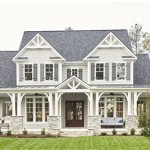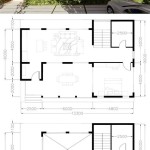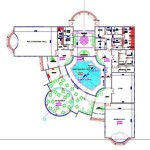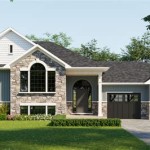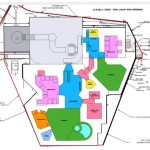Building Plans for an Insulated Cat House: A Comprehensive Guide
Providing shelter for outdoor cats, particularly during harsh weather conditions, is a vital aspect of responsible pet ownership and animal welfare. An insulated cat house offers a safe and comfortable refuge from the elements, protecting cats from cold, rain, snow, and excessive heat. Constructing such a structure requires careful planning and execution, relying on sound building plans that incorporate appropriate insulation techniques and durable materials. This article serves as a comprehensive guide to creating effective building plans for an insulated cat house.
The design and construction of an insulated cat house should prioritize the cat's safety, comfort, and overall well-being. A well-designed house will provide a warm and dry environment in winter and a cool and shaded space in summer. Furthermore, it protects against predators and offers a sense of security to the vulnerable animal.
Key Considerations Before Drafting Building Plans
Before embarking on the drafting of building plans for an insulated cat house, several key factors must be considered. These pre-planning considerations will significantly influence the ultimate design and ensure the resulting structure meets the needs of the intended feline occupants.
Firstly, the number of cats that will be using the house is a critical factor. A single cat house will suffice for one or two cats, but larger colonies will require a more spacious and potentially multi-chambered design. Overcrowding can lead to stress and aggression among the cats, negating the positive effects of the shelter.
Secondly, the local climate plays a crucial role in determining the level of insulation required. Regions with harsh winters will necessitate thicker insulation and potentially additional heating elements, while warmer climates may focus more on ventilation and shading to prevent overheating. Understanding the average temperature ranges and extreme weather events in the area is essential.
Thirdly, the available space and location for the cat house must be determined. The house should be placed in a safe, sheltered location away from high traffic areas and potential hazards. Consider proximity to predators and sources of noise and disturbance. The size of the available space will dictate the maximum dimensions of the cat house.
Fourthly, the materials to be used in construction must be carefully selected. Durability, weather resistance, and safety are paramount considerations. Untreated wood can rot or warp in harsh weather, while certain plastics may become brittle or release harmful chemicals. Choosing appropriate materials will ensure the longevity and safety of the structure.
Finally, the budget for the project must be established. The cost of materials, tools, and potentially hired labor can vary significantly depending on the chosen design and materials. Creating a realistic budget will help ensure the project remains feasible and avoids unnecessary expenses.
Essential Elements of Insulated Cat House Building Plans
Once the pre-planning considerations have been addressed, the building plans can be drafted. These plans should include detailed specifications for all aspects of the cat house, ensuring a clear and comprehensive guide for construction. Key elements to include are:
Dimensions and Layout: The building plans should specify the overall dimensions of the cat house, including length, width, and height. The internal layout should also be clearly defined, indicating the size and location of the entrance, sleeping area, and any optional features such as a separate feeding area. The dimensions should be appropriate for the number of cats that will be using the house, allowing them to move around comfortably and maintain a comfortable body temperature.
Framing and Structure: The plans should detail the framing structure of the cat house, including the types of wood or other materials to be used, the dimensions of the framing members, and the method of assembly. A strong and durable frame is essential to withstand weather and potentially rough treatment from the cats. Considerations should be made for the load-bearing capacity of the roof, particularly in areas with heavy snowfall.
Insulation: The type and thickness of insulation should be clearly specified in the plans. Common insulation materials include rigid foam board, fiberglass insulation, and recycled denim insulation. The R-value of the insulation should be appropriate for the local climate, providing adequate thermal protection during cold weather. The plans should also detail how the insulation will be installed to prevent moisture buildup and maintain its effectiveness.
Exterior Sheathing: The plans should specify the materials to be used for the exterior sheathing of the cat house. Plywood, OSB (oriented strand board), or weatherproof composite materials are common choices. The sheathing should be durable, weather-resistant, and securely attached to the framing. A waterproof sealant or paint should be applied to protect the sheathing from moisture damage.
Roofing: The design of the roof is critical for protecting the cat house from rain, snow, and sun. The plans should detail the type of roofing material to be used, such as asphalt shingles, metal roofing, or a waterproof membrane. The roof should be sloped to allow water to drain away effectively. Overhangs can provide additional protection from the elements.
Entrance: The entrance to the cat house should be designed to minimize heat loss and prevent drafts. A small, offset entrance is often preferred. The plans should specify the dimensions and location of the entrance, as well as any measures to prevent wind and rain from entering, such as a flap or tunnel. The entrance should be large enough for the cats to easily enter and exit, but not so large that it allows excessive heat loss.
Ventilation: While insulation is essential, proper ventilation is also important to prevent moisture buildup and maintain air quality. The plans should include details for ventilation openings, such as small holes near the roof or a screened vent. The ventilation should be designed to allow air to circulate without creating drafts.
Base and Elevation: The plans should specify the design of the base and elevation of the cat house. Raising the house off the ground on blocks or a platform can help prevent moisture damage and keep the interior dry. The base should be level and stable to ensure the house does not tip over. Considerations should be made for preventing pests, such as ants or termites, from entering the house.
Insulation Techniques and Material Selection
The effectiveness of an insulated cat house hinges on the proper selection and application of insulation materials. There are several options available, each with its own advantages and disadvantages.
Rigid Foam Board: Rigid foam board, such as extruded polystyrene (XPS) or expanded polystyrene (EPS), offers excellent insulation and is relatively easy to work with. It can be cut to size and glued or screwed to the framing. Rigid foam board is resistant to moisture and provides a high R-value per inch of thickness. However, it can be flammable and should be covered with a fire-resistant material.
Fiberglass Insulation: Fiberglass insulation is a more traditional option and is readily available at most hardware stores. It is relatively inexpensive and provides good insulation. However, fiberglass insulation can absorb moisture and lose its effectiveness if it becomes wet. It also requires careful handling to avoid skin irritation. When using fiberglass insulation, it should be wrapped in a vapor barrier to prevent moisture buildup.
Recycled Denim Insulation: Recycled denim insulation is an eco-friendly option made from recycled denim scraps. It is non-toxic, mold-resistant, and provides good insulation. Recycled denim insulation is also relatively easy to work with and does not cause skin irritation. However, it can be more expensive than fiberglass insulation.
Reflective Insulation: Reflective insulation, such as foil-faced bubble wrap, works by reflecting radiant heat. It is often used in conjunction with other types of insulation to enhance its effectiveness. Reflective insulation is lightweight and easy to install, but it is not as effective as other types of insulation in cold weather.
In addition to the insulation material, the method of installation is crucial. The insulation should be installed snugly and without gaps to prevent heat loss. All seams and joints should be sealed with tape or caulk to create an airtight barrier. Proper ventilation should also be provided to prevent moisture buildup within the insulated cavity.
The choice of materials for the exterior sheathing and roofing also plays a role in the overall insulation and weather resistance of the cat house. Durable, waterproof materials should be used to protect the insulation from moisture damage and ensure the longevity of the structure. Regularly inspecting and maintaining the cat house is essential to ensure the insulation remains effective and the structure remains safe and comfortable for the cats.

Cat House Roof Plans Myoutdoorplans

15 Diy Outdoor Cat House Plans For Feline Shelter

Outdoor Cat House Plans Howtospecialist How To Build Step By Diy

Outdoor Cat House Plans Myoutdoorplans

How To Build An Insulated Cat House Howtospecialist Step By Diy Plans

Outdoor Cat House Plans Unfinished Insulated With Heater Insulatedcathouse Feral

How To Build A Feral Cat Shelter Or Outside House

15 Diy Outdoor Cat House Plans For Feline Shelter

Insulated Outdoor Pet House With Platform In 2024 Cat Shelter Diy

25 Free Diy Outdoor Cat House Plans Shelter Blitsy



